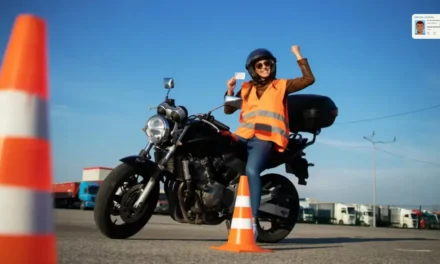Mounting a GoPro on your helmet seems straightforward, but navigating the legal landscape can be tricky.
The Department of Transportation’s (DOT) standard raises concerns about “rigid projections” on helmets, leaving many riders uncertain about compliance. We’ve researched five DOT-friendly ways to mount your GoPro that keep you legal and safe on the road.
Are GoPros illegal on motorcycle helmets?
No federal law bans GoPros on motorcycle helmets, but California has the strictest regulations in the country. The state enforces the DOT’s 5mm protrusion limit, making helmet-mounted GoPros illegal with a $250 penalty.
Other states are more lenient. Florida has no regulations against helmet cameras, creating a patchwork of enforcement. This legal ambiguity leaves many riders in a grey area where enforcement depends on individual interpretation by law enforcement.
Why Helmet Camera Mounting Is Controversial?
The debate over helmet-mounted cameras isn’t just about capturing great footage. It’s also about rider safety and legal compliance.
The controversy centers on the Department of Transportation’s Federal Motor Vehicle Safety Standard 218, which specifies that helmet projections shouldn’t extend beyond 5mm (0.20 inches) to prevent helmets from catching on objects during accidents.
This rule has sparked heated discussions in the motorcycle community. Some riders advocate for adhesive-based mounts as a compliant solution, while safety experts warn about potential risks.
There’s documented evidence of helmet accessory mounts breaking during crashes, compromising the helmet’s protection. Even secure mounts can create dangerous snag points that might catch obstacles during an accident.
The controversy deepens as any modification to your helmet, even temporary ones, could affect its DOT certification. This puts riders in a difficult position between capturing their adventures and maintaining safety standards.

Key Factors for Legally Mounting a GoPro
- Avoid Permanent Modifications
Never drill into your helmet. Permanent modifications can compromise its integrity and void its DOT certification.
- Use Adhesive-Based Mounts
Opt for high-quality adhesive-based mounts. These provide a secure attachment without damaging your helmet’s structure.
- Positioning
When positioning your camera, consider both safety and functionality. The mount shouldn’t obstruct your field of vision or create an imbalance that could strain your neck during long rides.
- Mount Durability
Look for options for quick removal, ensuring adaptability to different riding conditions while maintaining the helmet’s protective capabilities.
Top 5 Legal Ways to Mount a GoPro
1. Chin Mount
Your helmet’s chin area offers an ideal mounting location that keeps you compliant with the law. Using a flat adhesive mount here does not compromise your helmet’s DOT certification.
Plus, you’ll capture the perfect rider’s-eye view that motorcycle vloggers love. The chin position provides stability and keeps the camera below your line of sight, so there are no distractions, just pure riding footage.
2. Side Mount
Using a DOT-compliant adhesive mount, you can position your GoPro on either side of your helmet. This placement gives you easy access to controls while riding and offers a unique perspective of your journey. Remember to position it to avoid wind resistance.
3. Top Mount
While popular, top mounting requires careful consideration. To stay within the 5mm protrusion limit, keep your setup streamlined. This position offers excellent aerial views, but to maintain compliance, choose low-profile mounts. Use curved adhesive ones that follow your helmet’s contour for better aerodynamics.
4. Strap Mount
Strap mounts offer ultimate flexibility. These non-permanent solutions wrap securely around your helmet without adhesives or modifications. They’re perfect for riders switching between helmets or preferring no adhesives. Plus, they’re completely removable, leaving no trace on your helmet.
5. Handlebar Mount
When in doubt, mount your GoPro on your bike instead. This option sidesteps helmet mounting controversies while capturing amazing footage. Modern stabilization features make handlebar-mounted footage smooth, and you’ll never worry about helmet law compliance.






